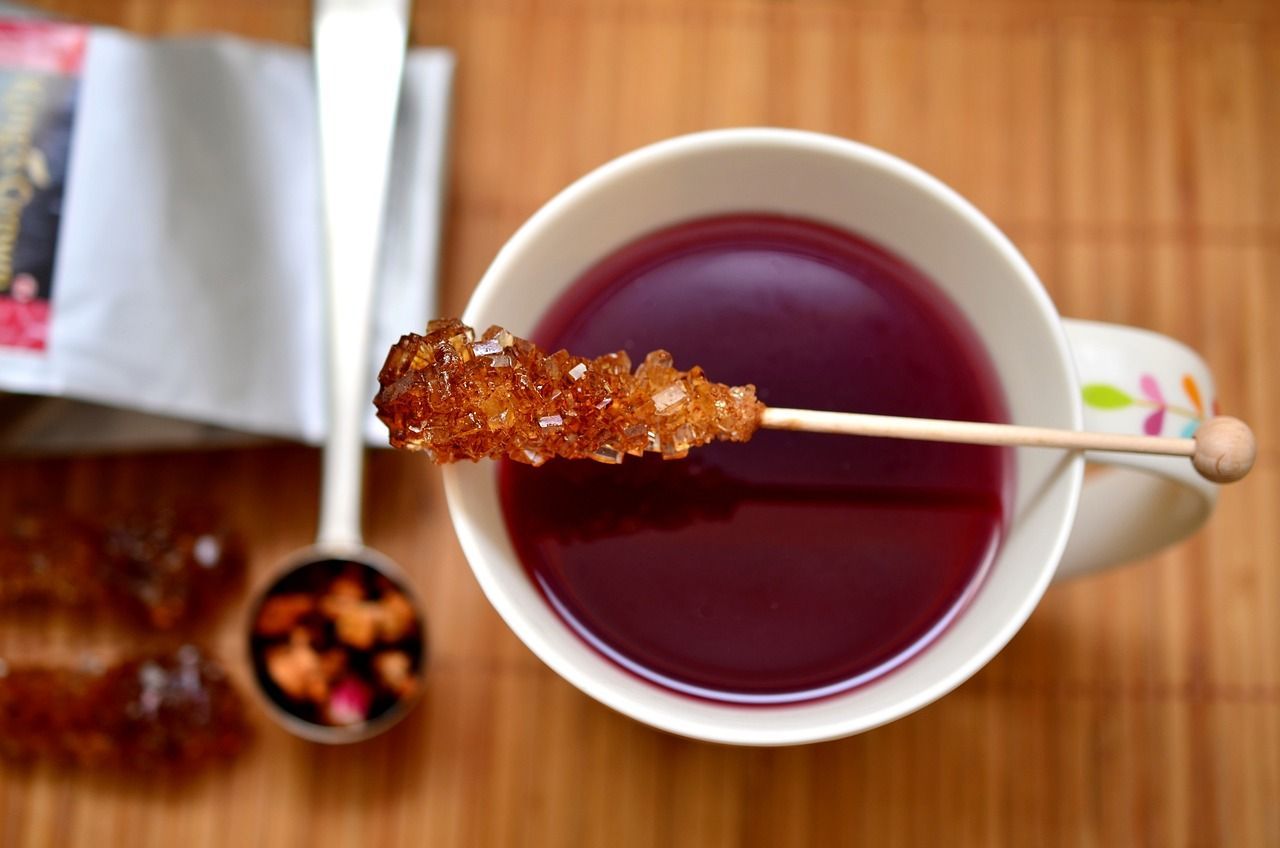Understanding Artificial Sweeteners, their effect on the Gut Microbiome and Your Overall Health
As a gastrointestinal surgeon, wellness advocate, and cofounder of Coral Cove Wellness Resort, I’ve dedicated my career to helping people understand the profound connection between what we consume and how our bodies respond. In today’s wellness landscape, one of the most common questions I hear from patients and guests is:
“Are artificial sweeteners really healthier than sugar?”
We live in a world that celebrates sweetness—morning lattes, protein bars, post-workout smoothies, and indulgent desserts. But with rising concerns about obesity, insulin resistance, gut health, and inflammation, many of us are looking for ways to satisfy our sweet tooth without compromising our wellness goals.
I encourage everyone to cultivate a lifestyle that supports optimal digestion, microbiome balance, and whole-body vitality. One key part of that journey is understanding how and why sugar alternatives—both natural and artificial—might be used in your diet, and how they can interact with your gut microbiome. These interactions can influence not only digestion but also weight management, glucose control, and metabolic health.
In this blog, I will explore how popular sweeteners—like aspartame, sucralose, saccharin, Stevia, monk fruit, and sugar alcohols—can shift the microbiome, what that means for your long-term health, and how to choose the options that best align with a wellness-focused lifestyle.
1. Non-Nutritive Artificial Sweeteners (NAS)
Aspartame [Equal, NutraSweet, Sugar Twin]
- Microbiome Effects:
Aspartame is metabolized largely in the small intestine, breaking down into phenylalanine, aspartic acid, and methanol, meaning little intact aspartame reaches the colon. However, its metabolites and indirect effects can still modulate the gut microbiota: - Animal studies show increases in Clostridium leptum and Clostridium cluster XI in rats, particularly when combined with a high-fat diet.
- Some human studies suggest subtle increases in Bacteroides fragilis and Bacteroides acidifaciens, and a decrease in Bacteroides coprocola, with individual variability in response.
- Health Implications:
- Clostridium cluster XI is associated with pro-inflammatory processes and may promote metabolic dysregulation.
- Shifts toward more Bacteroides can be linked to altered bile acid metabolism and potentially insulin resistance.
- Human clinical trials show that glycemic responses to aspartame are individualized, depending on baseline microbiome composition.
Sucralose [Splenda]
- Microbiome Effects:
Sucralose is largely non-absorbed and reaches the colon, where it can interact directly with the microbiome: - Animal studies demonstrate decreases in Lactobacillus, Bifidobacterium, and total anaerobes, alongside increases in Clostridia and Enterobacteriaceae.
- High sucralose intake can reduce microbial diversity and promote an environment favoring opportunistic pathogens.
- Health Implications:
- Loss of Bifidobacteria may impair gut barrier integrity and lower production of beneficial short-chain fatty acids (SCFAs).
- Increase in Enterobacteriaceae correlates with low-grade inflammation and may predispose to insulin resistance or obesity.
Saccharin [Sweet’N Low, Sweet Twin, Sweet’N Low Pink]
- Microbiome Effects:
Saccharin has been the most implicated NAS in microbiome-mediated metabolic effects: - In mice, saccharin intake induces dysbiosis with an increase in Bacteroides and Clostridiales and reduction in Lactobacillus.
- A pivotal human study (Suez et al., 2014) found that some saccharin consumers developed glucose intolerance, which correlated with higher Bacteroides and lower Lactobacillales abundance.
- Health Implications:
- Shift toward Bacteroides and Clostridiales may increase intestinal permeability and endotoxin translocation, contributing to inflammation and metabolic syndrome.
- Dysbiosis induced by saccharin has been shown to transfer glucose intolerance to germ-free mice via fecal microbiota transplantation, confirming a causal microbiome link.
Acesulfame Potassium (Ace-K) [Sweet One, Sunett] and Neotame [Newtame]
- Microbiome Effects:
- Animal studies show Ace-K can increase Firmicutes and decrease Bacteroidetes, altering the Firmicutes/Bacteroidetes (F/B) ratio, which is linked to obesity risk.
- Some evidence of increased Enterobacteriaceae has been observed, though data is less extensive.
- Health Implications:
- A higher F/B ratio is often associated with enhanced energy extraction from food and weight gain.
- Shifts in Enterobacteriaceae and reduced diversity may promote gut inflammation and dysregulated metabolism.

2. Sugar Alcohols (Polyols)
- Xylitol, Sorbitol, Erythritol, and Isomalt
- Sugar alcohols are poorly absorbed and can be fermented by the microbiota.
- Positive effects: Xylitol and isomalt have been shown to increase Bifidobacteria and Fusobacterium prausnitzii, both considered beneficial.
- Negative effects: Excess sorbitol and maltitol can increase Clostridium and cause gas/bloating, especially in sensitive guts.
- Health Implications:
- Sugar alcohols may support SCFA production, which can aid in glucose regulation and colonic health.
- Overconsumption can lead to GI distress without providing clear metabolic benefits.
3. Natural Plant-Based Sweeteners
- Stevia (Steviol Glycosides)
- Limited evidence suggests modest shifts in Bacteroides and Lactobacillus populations, but without strong dysbiosis signals.
- Stevia may have prebiotic-like effects in some models, supporting SCFA production.
- Monk Fruit (Luo Han Guo) Extract
- Early data suggests minimal disruptive effects on gut microbiota composition.
- May support stable microbiome diversity and neutral glycemic responses.
Health Implications:
Natural non-caloric sweeteners appear
less disruptive, making them preferable for long-term wellness and microbiome balance.

How Microbiome Shifts Influence Health
- Increased Firmicutes/Bacteroidetes Ratio
- Associated with greater energy harvest and potential weight gain.
- Reduction in Lactobacillus/Bifidobacterium
- May reduce SCFA production, compromising gut barrier and anti-inflammatory effects.
- Overgrowth of Enterobacteriaceae or Clostridium clusters
- Linked to low-grade inflammation, endotoxemia, and insulin resistance.
- Altered SCFA Profile
- Shifts in acetate, propionate, and butyrate production can influence glucose metabolism and appetite regulation.
Putting It All Together for Wellness
As a GI specialist and wellness advocate, I encourage my patients and Coral Cove guests to consider the bigger picture:
1.
Occasional use of artificial sweeteners can reduce sugar load, but heavy or chronic use may have unintended metabolic effects.
2.
Individual responses vary depending on gut microbiome composition, baseline diet, and lifestyle.
3.
Favor natural alternatives like Stevia, monk fruit, or moderate use of sugar alcohols, which tend to be less disruptive to gut microbiota.
4.
Prioritize whole foods and fiber-rich foods to support a diverse, resilient gut microbiome and metabolic health.
Final Thoughts
Artificial sweeteners are
not inherently “good” or “bad,”
but they are tools—and like any tool, their effects depend on how and how often they’re used. By understanding their impact on the gut microbiome and metabolic health, we can make informed choices that align with our long-term wellness goals.
At
Coral Cove Wellness Resort, we focus on helping our guests develop a balanced, microbiome-friendly lifestyle, where sweetness comes from both nourishing foods, meaningful activities, and mindful indulgence.
References:
Ahmad, Samar Y., et al. "The Effects of Non-Nutritive Artificial Sweeteners, Aspartame and Sucralose, on the Gut Microbiome in Healthy Adults." Nutrients, vol. 12, 2020, 3408. Available at: https://doi.org/10.3390/nu12113408
Conz, Andrea, et al. "Effect of Non-Nutritive Sweeteners on the Gut Microbiota." Nutrients, vol. 15, 2023, 1869. Available at: https://doi.org/10.3390/nu15081869
Feng, Jiahao, et al. "Non/Low-Caloric Artificial Sweeteners and Gut Microbiome: From Perturbed Species to Mechanisms." Metabolites, vol. 14, 2024, 544. Available at: https://doi.org/10.3390/metabo14100544
Pearlman, Michelle, et al. "The Association Between Artificial Sweeteners and Obesity." Current Gastroenterology Reports, vol. 19, 2017, 64. Available at: https://doi.org/10.1007/s11894-017-0602-9
Suez, Jotham, et al. "Non-caloric Artificial Sweeteners and the Microbiome: Findings and Challenges." Gut Microbes, vol. 6, no. 2, 2015, pp. 149-155. Available at: https://doi.org/10.1080/19490976.2015.1017700
Yun, Lisa. "Are There Healthy Sweeteners: The Effects of Sugar Substitutes on the Gut Microbiome." Nutrition Bytes, vol. 20, no. 1, 2016. Available at: https://escholarship.org/uc/item/6bs6b2zz




